Haida Filters NanoPro ND 3.0 Filter Review
by Alex W.
The photography filter market seems to grow with every passing day, with more and more brands entering the market to try and stake their claim for the top spot. It's no surprise - After all, filters can make a huge difference to your photography and more photographers recognise that every day.
Further Reading - 5 Filters That Will Transform Your Photography
The 10 stop neutral density filter is probably the most competitive section of this market, but with so many companies claiming perfect colour neutrality and excellent sharpness it can be hard to know where to spend your hard earned cash. Once upon a time it was a choice between a couple of leading brands, but since advancing technology in metal coating started becoming cost effective for the photography market these lesser known brands have leapt into action.
Contents
Haida NanoPro 10-Stop ND Filter Review
-
Haida NanoPro MC 100mm ND1000 Filter Optical Glass Neutral...
- Nano Multi-Coated. Anti-Reflection
- Dimensions: 100mm x 100mm, 3.94" X 3.94".
Haida are by no means a new company, but like many similar Asian filter manufacturers they have taken advantage of advancing technology over the past few years and started producing high-end filters that square up to the likes of Lee and Formatt Hitech.
Their most recent offering is their range of NanoPro filters, which refers to the weather resistant and anti-reflective coating on each side of the filter. This not only gives the filter a bit of protection against the elements, but the anti reflective properties reduce the unsightly glare that is sometimes introduced when a filter is attached to the lens.
Haida offer this NanoPro MC range of neutral density filters in a number of different strengths, and were one of the first manufacturers to start producing 150mmx150mm versions for use with bulbous lenses such as the Nikon 14-24mm and the Tamron 15-30mm. We're focusing on the Haida NanoPro ND 3.0 here, but given the identical manufacturing process we can assume that the rest of the range perform similarly to this one.
Price, Packaging & Protection
The Haida may not be the most expensive 10-Stop ND filter on the market, but it's certainly not at the lower end of the price spectrum. It comes in at around the £100 mark for the 100mm x 100mm filter, which is slightly cheaper than the likes of Formatt Hitech's Firecrest, NiSi's IR Coated ND Filter, and the Kase Wolverine ND.
There's a lot to be said for the packaging of a product - Well thought out and designed packaging indicate that the company behind it care about how they come across, and companies that care about their image rarely want to release sub-par products.
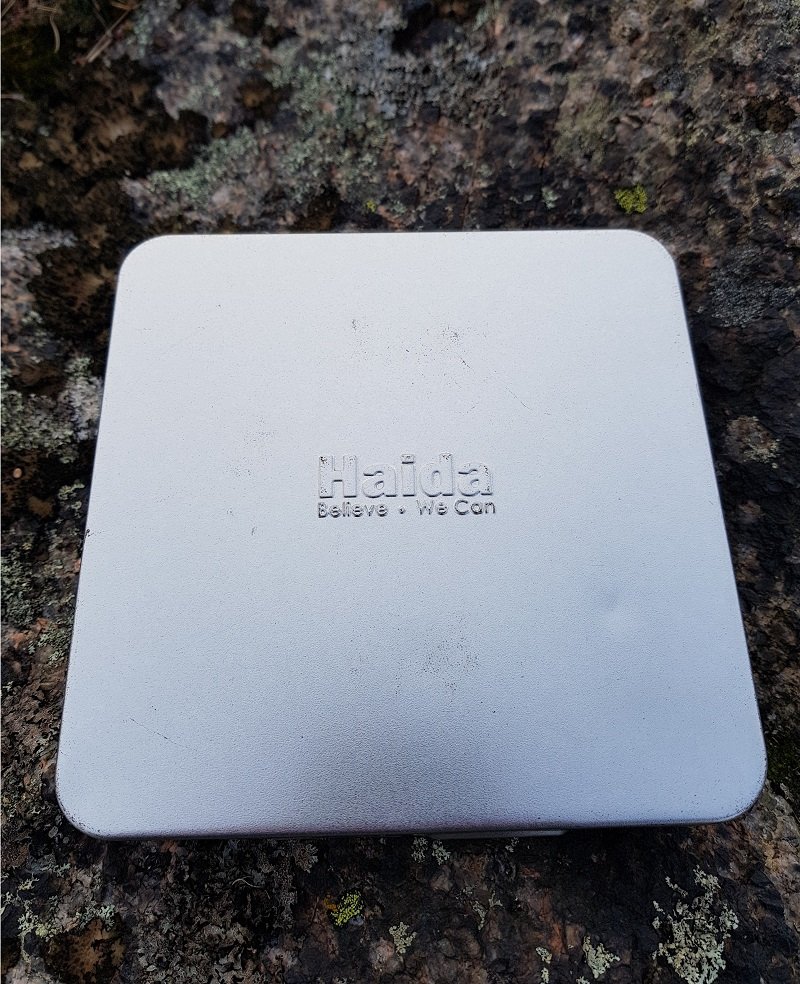
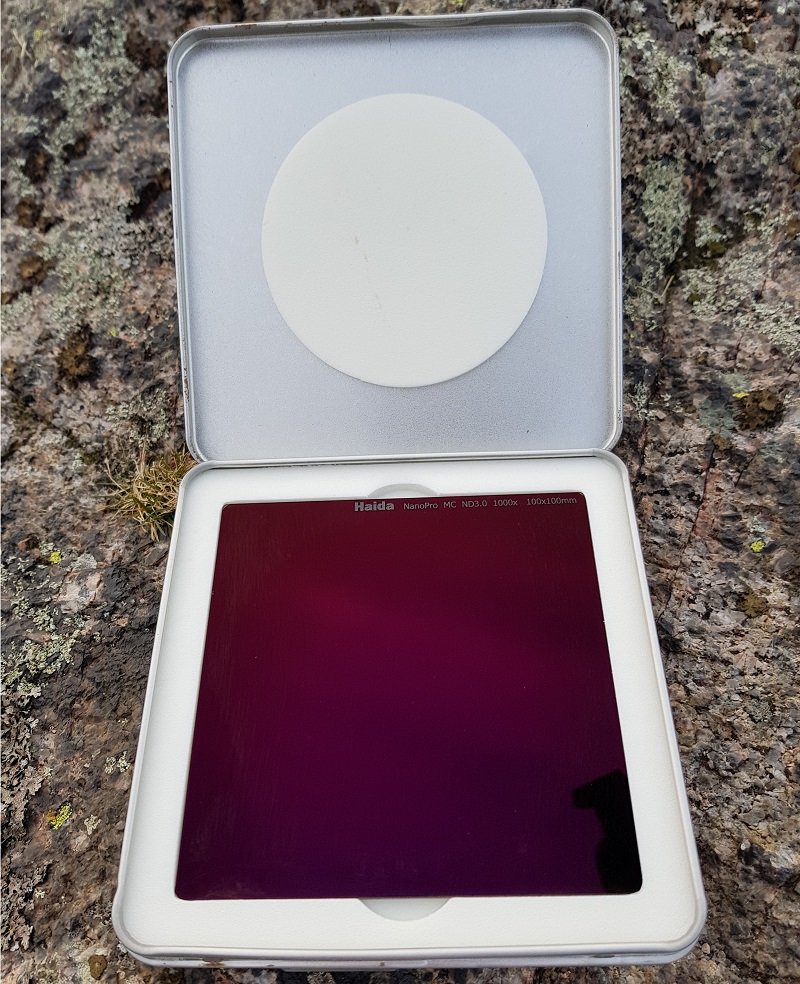
You'll be happy to learn that the quality of the Haida's packaging reflects the premium price tag and instils a sense of class from the start. Inside the white box is a small tin that contains the filter, perfectly slotted into the hard foam insert to keep it from sliding around inside the tin.
This isn't just for presentation's sake though. The tin holder is designed to be used in the field, and it's a much better transport solution than some of the other offerings. NiSi, for example, use a bulky container for their filter storage solutions, and Lee's Proglass ND comes in an elastic strapped sleeve that can easily become infested with all manner of grit and sand.
On the balance of things, the tin case and firmly secured foam insert is a good compromise between protection and portability. Add that to a slightly cheaper price than the majority of it's direct competitors and the Haida NanoPro is looking a very solid purchase so far. As you can see from the images, my copy has taken a bit of a beating out in the field. Absolutely no harm has come to the filter itself though, so it's a solid piece of protective equipment.
One downside I did find was that the light-sealing gasket doesn't come attached to the filter itself. As a result I was forced to attach it myself, which is never an ideal situation when you're as bad at DIY as me.
Here you can see the Haida NanoPro mounted on the NiSi V5 Pro Filter Holder.
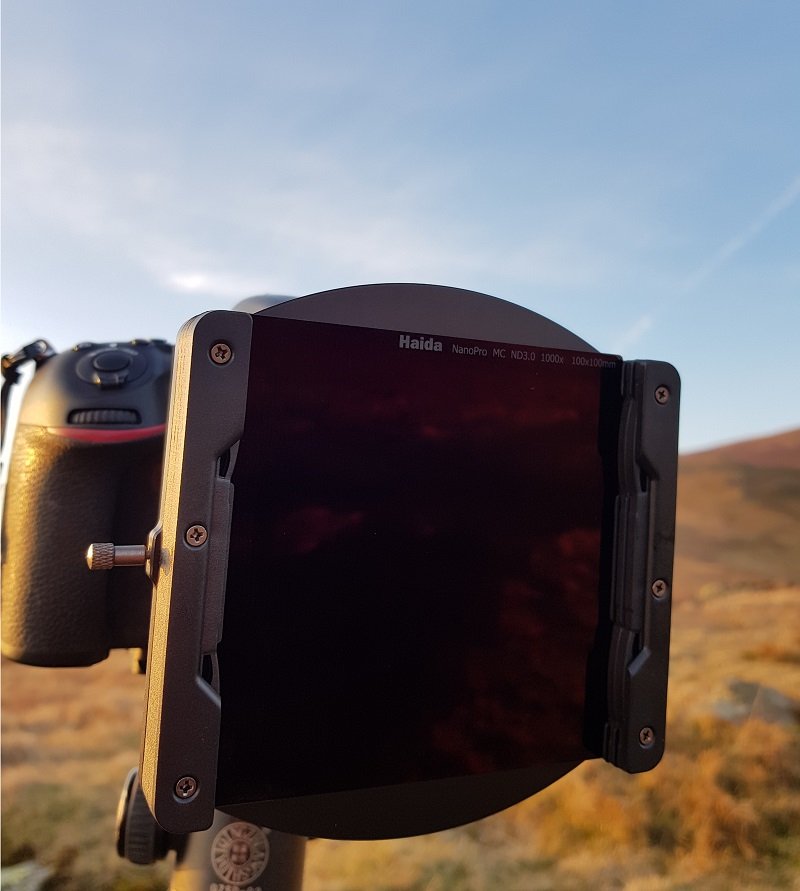
Colour Neutrality
Colour neutrality is the big test of any neutral density filter though. The precision involved in manufacturing a completely colour neutral piece of darkened glass is what drives the price of ND filters so high, so obviously when looking at the premium end of the price spectrum we are expecting premium results.
You will notice that the second, filtered image is slightly brighter than the unfiltered version. I used the Android app CamCalc to calculate the shutter speed needed, and in an ideal world this would result in two exposures of exactly the same brightness. The fact that it's not means that my particular copy of the Haida doesn't quite offer a 10-stop reduction in exposure, but the difference is so negligible as to be inconsequential.
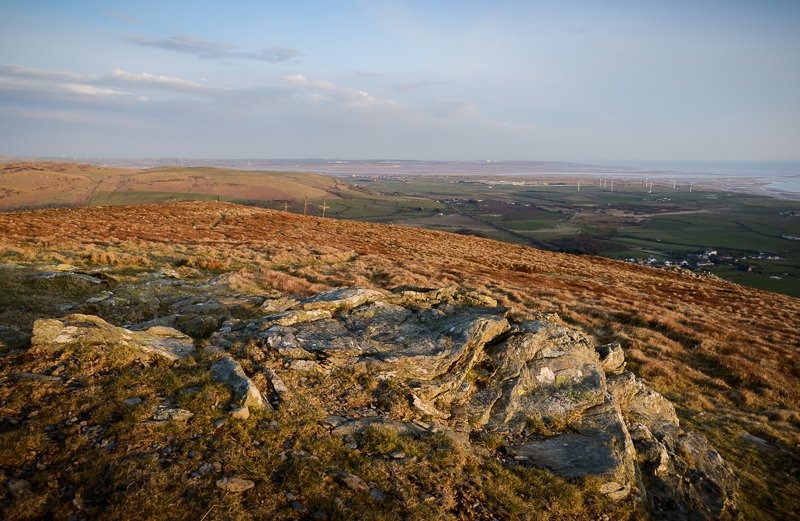
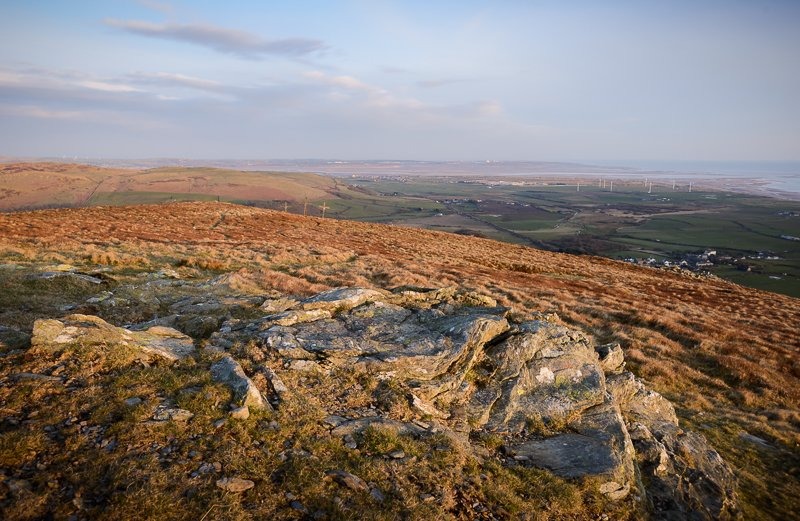
I won't bore you with the intense details of testing colour response, and in any case On Landscape did a far better job than myself in this article. Instead I'll leave you with the image above for reference. Slide across the image to alternate between unfiltered and the Haida NanoPro - These were taken minutes apart and have the exact same edits applied, and show an almost complete absence of colour cast in the filter.
There is a very slight purple cast over the areas of the landscape that are being directly illuminated by the sun. This only seems to appear when the land is directly lit for some reason. In any case, it's a very simple problem to solve - An adjustment of -5 on the Tint control in Lightroom negates the cast completely, as you can see below.
Further Reading - From Capture to Completion - An Introduction to Lightroom
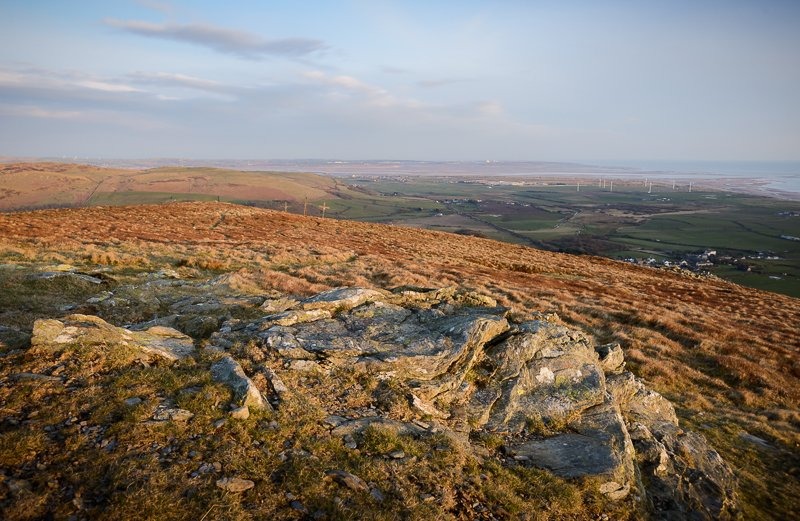
The takeaway is that Haida outperforms every other 10-Stop ND filter on the market for colour neutrality, with the Kase Wolverine being a very close second. The majority of the others exhibit some kind of notable colour cast, and whilst most are easily eliminated in post-processing there are some to steer clear of.
You Might Like…. Kase Wolverine 10-Stop Neutral Density Filter Review
There will be a more comprehensive comparison between these filters in the near future, but for now I can assure you that the Haida 10-Stop NanoPro is one of the best quality neutral density filters on the market.
Image Sharpness
Attaching any additional piece of equipment in front of your precisely manufactured lens is going to have some sort of effect on the sharpness of the image, but we're getting to the point now that this difference is negligible.
On Landscape did conduct extensive testing on this matter, but I'm content with a visual analysis. A 100% crop of the image from the colour neutrality test, taken on a Nikon D800 with Nikkor 18-35mm lens.
You can see almost 100% crops of the images side by side below and judge for yourself. You would be very hard pressed to see any decline in sharpness. I'm not one for pixel peeping, so that's more than good enough for me. It's worth noting that the majority of the Haida's competitors also show a negligible decline in sharpness.
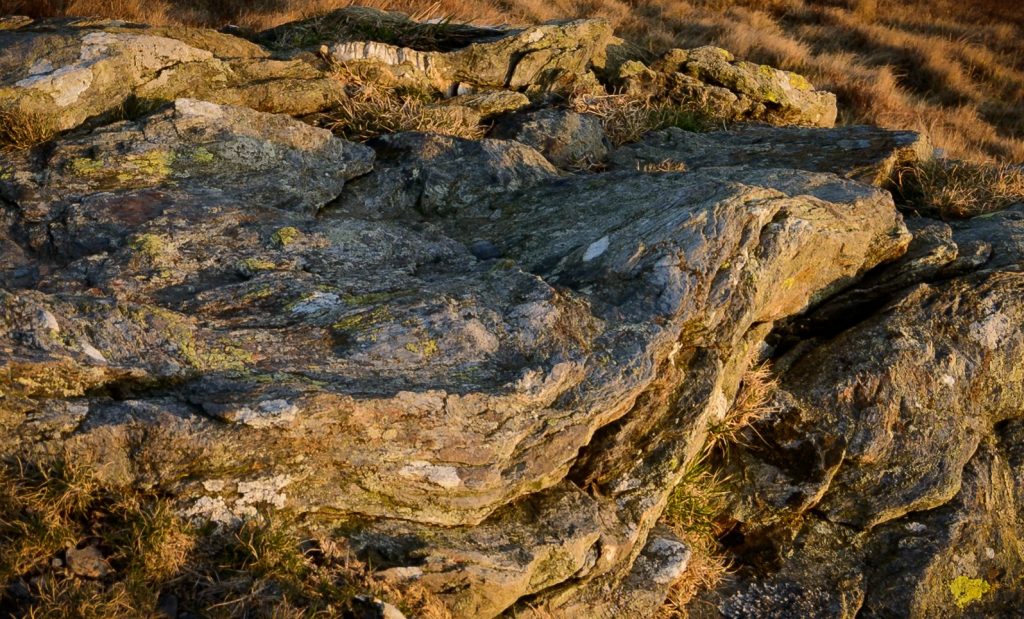
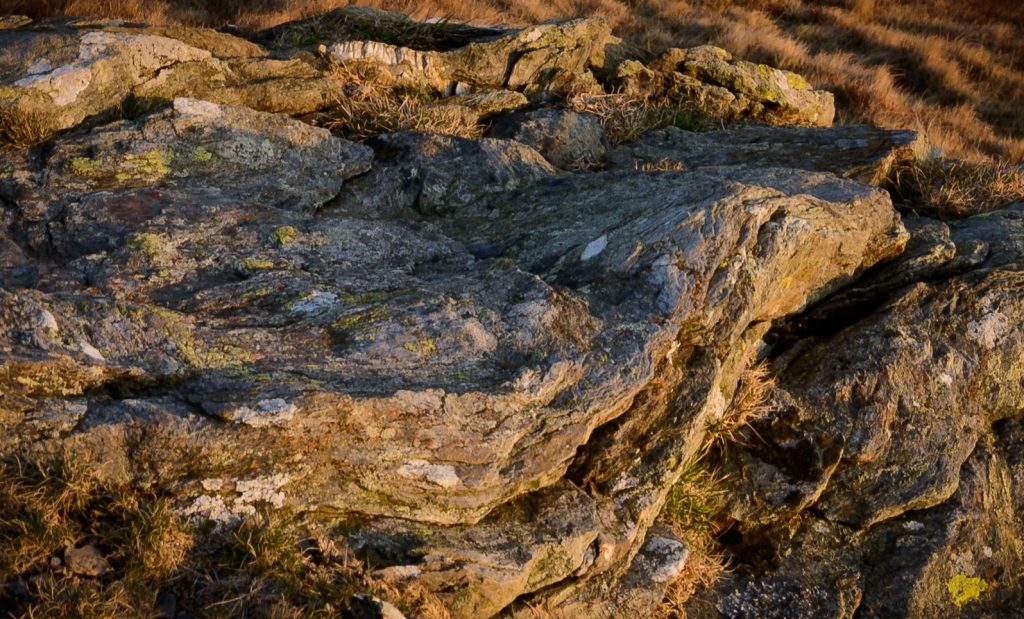
Conclusion
It's clear from this review, and the testing that On Landscape conducted, that the Haida NanoPro range of filters offer incredible quality. This 10-stop outperforms it's marginally more expensive competitors across the board in terms of image quality and is supplied with arguably the best packaging and protection too.
All things considered you can't go far wrong with this filter. As mentioned, a more extensive comparison between filters will be conducted in the future.
Read More…
- 5 Filters That Can Transform Your Photography
- Best Landscape Photography Cameras
- The Ultimate Guide to Landscape Photography Part 1
- 5 Must Buy Lenses for your Nikon DSLR
 |
 |
 |
 |

About Alex W.
Alex is the owner and lead writer for Click and Learn Photography. An avid landscape, equine, and pet photographer living and working in the beautiful Lake District, UK, Alex has had his work featured in a number of high profile publications, including the Take a View Landscape Photographer of the Year, Outdoor Photographer of the Year, and Amateur Photographer Magazine.
Thoughts on "Haida Filters NanoPro ND 3.0 Filter Review"
 |
 |
 |
 |
You can Get FREE Gifts. Furthermore, Free Items here. Disable Ad Blocker to receive them all.
Once done, hit anything below
 |
 |
 |
 |
